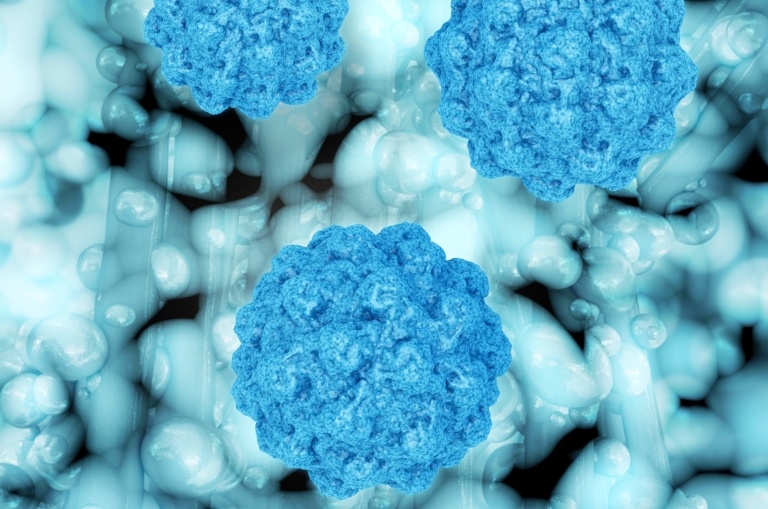Keywords:
By Sirak Kifle
Clinical and public health microbiology laboratories reduce the burden of infectious diseases by detecting and characterizing pathogens in infected patients and communities. Next generation sequencing (NGS) analysis can improve clinical and public health decisions through more accurate and rapid determination of the sources of infectious diseases, as well as the epidemiology and evolution of infectious pathogens in hospitals. NGS is already used to make decisions in diagnositics.
With all the benefits that NGS has to offer, can we afford NOT to be using it more widely to inform decision-making for the prevention and treatment of infectious disease? Here we take a closer look at the key benefits NGS can bring to medical microbiology.

Automating NGS can help clinical microbiologists with earlier identification and timely control of pathogens such as norovirus, which is responsible for about one of every 5 cases of acute gastroenteritis worldwide.
The role of molecular technologies in medical microbiology
Infectious microorganisms are a significant problem in hospitals, especially as not all pathogenic bacterial species can be cultured in a diagnostic laboratory for identification. When quick reactions are needed to save patients and prevent the outbreak of diseaes, we simply can’t afford to wait for microbiological test results that sometimes require several days of organism growth in specialized media and identification by morphology and metabolomic reactions. Such conventional microbiology tests are also limited in terms of how many species can be analyzed at once. What is more, conventional techniques don’t easily identify the presence of antimicrobial resistance (AMR) genes.
Molecular technologies, on the other hand, offer numerous additional methods to look at the genetic content of a microbial infection. NGS, in particular, has been proven to be effective in medical microbiology laboratories and for the implementation of infection prevention measures. In contrast to Sanger sequencing, a single protocol can be used in next-generation sequencing for all pathogens for both identification and typing applications. Another big advantage of NGS is that it allows analysis of many more samples in parallel, compared to Sanger sequencing.
“Current molecular diagnostics of human pathogens provide limited information that is often not sufficient for outbreak and transmission investigation. Next-generation sequencing determines the DNA sequence of a complete bacterial genome in a single sequence run, and from these data, information on resistance and virulence, as well as information for typing is obtained, useful for outbreak investigation."¹
Why NGS?
Clinical labs are increasingly counting on NGS to cope with their analytical demands. As with all new techniques, there are high hopes involved. Considering how fundamentally NGS changes the analytical workflow, it really is capable of revolutionizing clinical diagnostics.
Next generation sequencing enables personalized microbiology, the standardization of methods, the tracking of outbreak-specific clones, and is relevant for a large number of applications in clinical microbiology. We can apply sequence analysis to determine the genetic relationships of either bacteria or viruses, and the detection of mutations in viral or bacterial genomes that lead to resistance against antivirals or antibiotics¹.
NGS does not require target-specific primers, which are required for Sanger sequencing. The whole genome of a pathogen is sequenced at random in a single run.
NGS workflows improve clinical microbiology
- Less technical laboratory involvement: NGS requires less technical laboratory involvement than conventional identification methods for pathogens in clinical microbiology.
- Better patient diagnosis and shorter turnaround times: Rapid infection identification and diagnosis are imperative and highly important, as time is critical when it comes to the outbreak of diseases. NGS with high-throughput automation solutions further speeds up the process. While PCR-based methods may be faster, they provide much less information.
- Broader diagnostics repertoire: NGS enables the identification of several organisms – bacteria, viruses, fungi, yeasts, or parasites – in one sequence run as opposed to a variety of individual tests traditionally required to identify a pathogen. It is possible to use either bacterial isolates of different patients or from multiple species present in patient samples from one individual¹.
- Further benefits include the clinical identification of pathogens from primary samples or pure culture, infection control actions, and pathogen discovery. NGS enables the investigation of pathogen outbreaks in community and hospital settings to guide containment measures. With NGS, a comprehensive pathogen detection without priorknowledge of the target organism is possible, as NGS is not restricted to known organism sequences².
Practical examples of NGS applications in clinical microbiology
Outbreak control
During a recent outbreak of Salmonella schwarzengrundin Nanjing, NGS was used to detect pathogens and fight a possible epidemic. Analysis showed that S. schwarzengrundwasthe same strain that was found in spiced donkey meat, which patients confirmed to have consumed. NGS data combined with epidemiological analyses were used to confirm an outbreak and trace the source of contamination³.
Phenotypic resistance detection
Current research investigates how NGS can help to predict phenotypic resistance using known genetic determinants of antimicrobial resistance. These findings can offer great advantages in promoting the right anti-bacterial agents for a patient⁴.
Evolutionary pattern assessment
NGS helps to assess the micro-evolutionary patterns among various clinical isolates and to establish their (un)relatedness, which not only allows for early intervention but also provides links to the pathogenic isolates of the past. Establishing the phylogenic relatedness of the isolates and calculating the mutation rate may help point towards the common ancestry of the isolates⁴.
Summary
Next-generation sequencing is a powerful tool to accelerate the detection of pathogens in clinical settings. In upcoming articles of this blog series, we will identify the barriers that are holding back clinical microbiology labs from implementing NGS and how we can break them down. Stay tuned and subscribe to our blog!
References
1. Deurenberg et al., Application of next generation sequencing in clinical microbiology and infection prevention. J Biotechnol. 243 (2017) 16-24.
2. Loman et al., Performance comparison of benchtop high-throughput sequencing platforms. Nature Biotechnol. 30 (2012) 434-439.
3. Du et al., Next generation sequencing for the investigation of an outbreak of Salmonella Schwarzengrund in Nanjing, China. Int J Biol Macromol. 107 (2018) 393-396.
4. Motroa et al., Next-generation sequencing applications in clinical bacteriology. Biomol Detect Quantif. 14 (2017) 1–6.
Keywords:
About the author

Sirak Kifle
Dr. Sirak Kifle is Sales Development Specialist for CDx and Genomics in the EMEA region. Sirak studied Biology at the University of Munich, prior to gaining his PhD from the University of Kiel, Germany. At Tecan, Sirak has developed extensive experience in automated workflows, with a strong focus on automated sample preparation for clinical genetics applications that are helping to revolutionize molecular diagnostics and facilitate the advance of personalized medicine.











